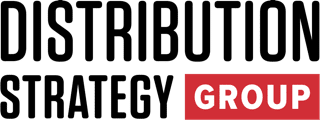Watsco Inc. is leaning on its digital tools, strong U.S. replacement sales, and an initiative-taking A2L refrigerant transition strategy to steady its outlook after a first-quarter earnings and revenue miss that tempered near-term optimism but underscored its long-term market leadership.
Don’t miss any content from Distribution Strategy Group. Join our list.
The Miami-based heating, ventilation, and air conditioning (HVAC/R) distributor reported Q1 2025 revenue of $1.53 billion, down 2% year-over-year from $1.56 billion in Q1 2024.
Despite the miss, chairman and CEO Albert Nahmad called it “a good first quarter” and emphasized the company’s early investments in the A2L refrigerant transition. “We have trained thousands of customers and updated our technology platforms to provide needed functionality ahead of the selling season,” he said. “The new systems offer more efficient and sustainable solutions and provide enhanced sales and profitability for both us and our customers.”
The new A2L refrigerants, required by recent U.S. regulations for residential and light-commercial HVAC systems, are expected to impact over half of Watsco’s total sales. This year, the company is converting approximately $1 billion into A2L systems this year.
Core U.S. residential replacement sales grew 10%, driven by higher unit volumes, price realization, and a richer mix of high-efficiency products, the company says.
Watsco vice president Paul Johnston noted that most Q1 sales were still legacy 410A systems, but “early in Q2, we’re starting to see the transition over to the A2L product. We’ll be out of 410A by the end of the quarter.”
Analysts raised concerns about the earnings miss but expressed confidence in Watsco’s long-term fundamentals. “The digital capabilities and scale position it to regain share as the A2L transition accelerates,” said Baird’s David Manthey on the Watsco earnings call.
Watsco’s digital platform, which now serves about 67,000 contractors and technicians, continues to be a competitive edge. “Digital users exhibit higher growth and 60% lower attrition,” Nahmad said. “Our pricing technology enables nearly real-time optimization by customer, product, and region.”
While Watsco saw gains in its core market, softness elsewhere held back results. International sales fell 9%, commercial refrigeration dropped 5%, and new construction faced delays tied to product availability. Watsco executive vice president of strategy Barry Logan attributed part of the shortfall to “contractors delaying purchases to transition from 410A to 454B,” as well as one fewer selling day in the quarter.
The company also addressed concerns over tariffs and pricing pressure. “We are collaborating closely with original equipment manufacturer (OEM) partners on current and future pricing actions in response to tariffs,” Nahmad said. “We see greater uncertainty in Canada and Latin America, but domestically we have the scale and technology to act quickly and efficiently.”
Asked whether customers were resisting higher prices, Johnston said, “There’s no real pushback yet but contractors and consumers are assuming there will be higher prices due to tariffs. Most OEM pricing actions have been standard increases, not surcharges.”
Watsco’s inventory position reflects its forward-looking approach. “We did not lean into 410A. We leaned into 454B, and that’s paying off in our replacement business,” said Logan. “We’re not chasing short-term volume. We’re investing for long-term leadership.”
Looking forward, Nahmad said Q2 and Q3 should show greater benefits from the A2L product mix. “Recent sales and margin trends have improved. We expect demand to be more resilient during the seasonally stronger periods that follow the first quarter.”
Analysts asked whether pricing momentum would continue. “We’re working to achieve our long-term goal of a 30% gross margin,” Nahmad said. “We have several ideas to get there.”
Watsco is also pursuing acquisitions, adding two businesses in early 2025. Since 2019, it has acquired 11 companies representing $1.6 billion in annualized sales. “We’re the market leaders in a $74 billion fragmented distribution market,” Nahmad said. “The products we sell are a necessity, and the installed base keeps growing.”
Summing up, Logan noted that Q1 represented a transition period with some channel disruption—but that the company is positioned to accelerate into the summer. “This is a company built for long-term performance,” he said. “We’ve got the strategy, the capital, and the tools to win.”
As Chief Operations Officer of a Distribution Strategy Group, I'm in the unique position of having helped transform distribution companies and am now collaborating with AI vendors to understand their solutions. My background in industrial distribution operations, sales process management, and continuous improvement provides a different perspective on how distributors can leverage AI to transform margin and productivity challenges into competitive advantages.

